







![]()
Cryptozoology is the search for and study of animals that mainstream science considers to be mythical or non-existent. Animals studied by cryptozoologists are called cryptids. Famous examples include creatures like Bigfoot, the Loch Ness Monster, and the Yeti. Unsurprisingly then, there is quite a lot of derision aimed at cryptids in scientific circles. Cryptids are the stuff of low-level tabloid magazines and conspiracy theorists, right? Wrong! Many animals that experts once believed to be cryptids are actually flesh and blood living things.
The platypus is a weird animal that seems to break a lot of rules. At the time of its first discovery by Europeans, it seemed to contradict everything they thought they knew about mammals.
The platypus is a furry, Australian mammal that lives in rivers. It has the feet of an otter and the tail of a beaver. So far, not that strange. Then one looks at the head, and it appears to have a bill of a duck, unlike any other mammal.
Even stranger still is the fact that it lays eggs. Only five living mammal species do so, the platypus and four kinds of echidna (spiny anteaters). Up until the discovery of the platypus, it was common knowledge that one of the things which defined a mammal was giving birth to live offspring.
On top of this, the platypus is venomous! Venomous mammals were basically unheard of. The male platypus produces venom from glands attached to its ankle spurs. It is believed these are used defensively against other males, especially during mating season.
It’s unsurprising then that European naturalists from the 18th and 19th centuries believed the platypus to be a hoax. When the first platypus corpses arrived in Europe from Australia, the experts weren’t sure what to make of them.
Many thought it to be the work of Chinese sailors, who had previously tricked them with the corpse of a supposed mermaid. It was believed the platypus corpses were just well-put-together amalgamations of other animals! It took nearly a century for zoologists to admit they were wrong and definitively confirm the existence of the platypus. 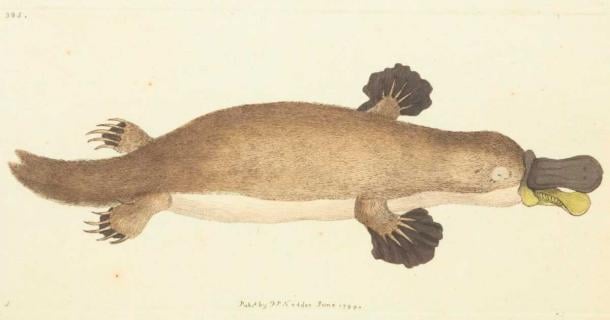
After looking at the first published illustration of a platypus from 1799, you can understand why English naturalists though it might be a hoax ( Public Domain )
Another poster child for famous cryptids that turned out to be real is the terrifying giant squid. Reports of the giant squid go back 2,000 years to the time of Aristotle. Pliny the Elder, a Roman naturalist, did a pretty good job describing the giant squid in his Natural History .
He got pretty much everything right, except the size. Showing that the giant squid was too massive even for the superstitious ancient writers to get right, Pliny only estimated the squid at 30 feet (9 meters) long, when in reality it’s over 40 feet (12 meters) long! Early run-ins with giant squid were likely the inspiration for several mythological sea monsters , like Norse mythology’s Kraken and the Scylla of Greek mythology. 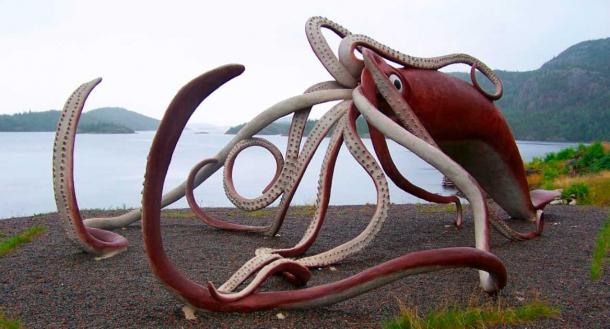
A life size model of the world record-holding giant squid discovered near Glover’s Harbor, Newfoundland (ProductOfNewfoundland / CC BY NC ND 2.0 )
The giant squid remained a cryptid for so long because its existence was seemingly fantastical, and hard to verify. The sea is almost unfathomable in its size and depth. Looking for anything in the ocean, even something as huge as a giant squid, is like looking for a needle in a haystack. This is exacerbated by the fact that the giant squid is a deep sea creature, and humans haven’t spent much time down there.
The only chance early zoologists had to study and verify the giant squid was through carcasses that would very occasionally wash ashore. The problem with this was that hungry sea creatures had often begun eating the corpses before they washed ashore, meaning complete samples were rare. Added to this was the fact that the carcasses tended to rot extremely quickly, leaving little to work with.
The first recorded discovery of a mostly intact giant squid carcass was in the 1870s. However, it wasn’t until the last decade or so that we managed to take photos of a live specimen, cementing the giant squid’s status as a former cryptid. 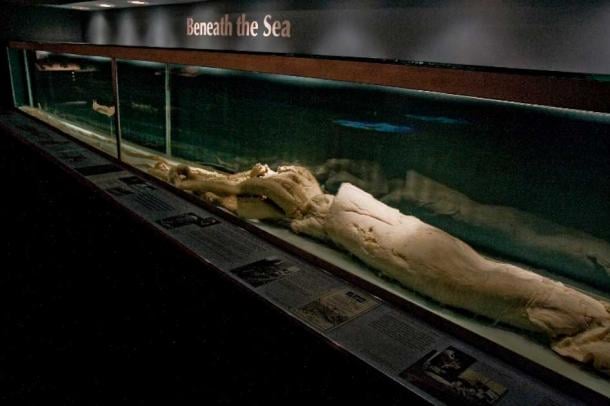
Giant squid occasionally washed ashore, but were rarely intact, and quickly decomposed. Giant squid at The Rooms in St. John’s; a regular sized squid is placed in the top left corner to compare. (Zach Bonnell / CC BY NC ND 2.0 )
Stories of dreadful sea serpents that dwell in the ocean date back thousands of years. Even the Bible makes references to a gigantic beast called Leviathan that roams the briny depths looking for prey. Much like in the case of the giant squid, for a long time, scientists thought these sea monsters were too huge to be real.
Cryptozoologists, however, believe that many sightings of these historic sea monsters are cases of real animals being misidentified, and then being given a fantastical, superstitious twist. One incredibly rare species is perhaps the likely culprit.
The oarfish is a long, bony fish with an elongated body that has been found to grow to at least 56 feet (17 meters) long. They are found in oceans all over the world, but usually live in the deep ocean. They have sometimes washed ashore during storms and occasionally come to the surface when near death. 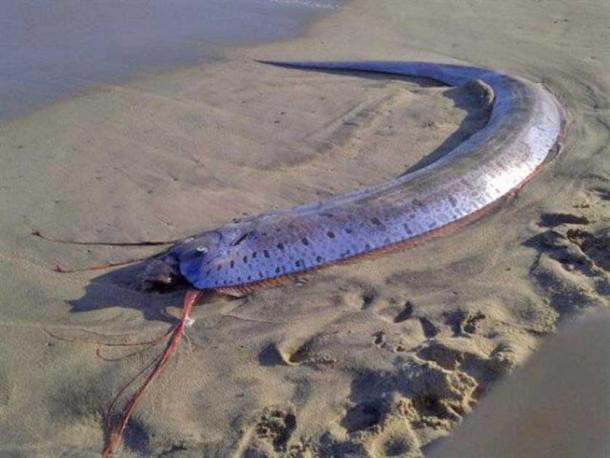
A giant oarfish (Regalecus glesne) found in Los Cabos, Mexico (Katia Cao / CC BY 3.0 )
It seems likely that these giant fish are responsible for at least some of these early depictions of sea serpents. The first live oarfish wasn’t filmed until 2001, showing just how rare and hard to verify these fish were. 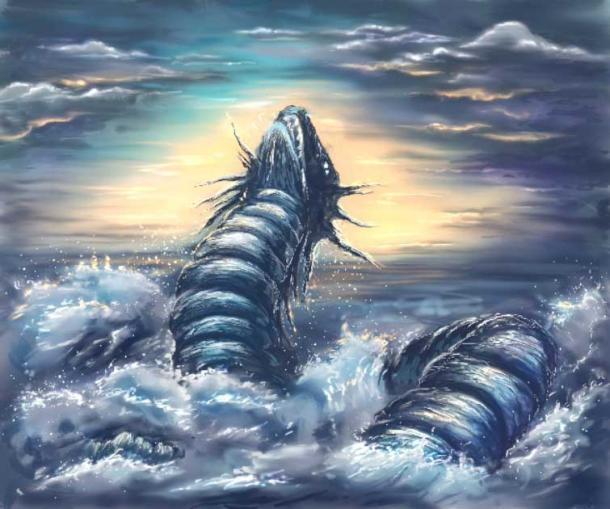
After hearing about giant sea snakes, imaginations went wild. Sea serpents can no longer be considered cryptids, however, after documented creatures 56 feet (17 meters) long ( Anastasiya / Adobe Stock)
Now obviously, unicorns as traditionally portrayed don’t exist. The unicorn is still very much a cryptid. Except it isn’t. Although no one has discovered a horned horse yet, we can go back 2,000 years and find the animals that likely inspired talk of unicorns.
Pliny the Elder described the unicorn two thousand years ago. He described it as having “the feet of the elephant, and the tail of the boar, while the rest of the body is like that of the horse; it makes a deep lowing noise, and has a single black horn, which projects from the middle of its forehead, two cubits in length. This animal, it is said, cannot be taken alive.” That sounds suspiciously like an Indian rhinoceros.
Reading Pliny the Elder’s description of a unicorn sounds a lot like the Indian rhino (Yathin S Krishnappa / CC BY SA 3.0 )
There is another contender for real-life unicorn inspiration. The second is a little stranger, however, seeing as it lives in the sea. The narwhal is a type of toothed whale that lives in the freezing waters around Greenland, Canada, and Russia. Its defining feature is a large protruding canine tooth, known as its tusk. This tusk is startlingly similar to the imagined unicorn horn.
Unicorn horns were an incredibly popular curio through the Middle Ages into the Renaissance period. These unicorn horns came from narwhals that the Vikings had hunted, selling their tusks for crazy prices as unicorn horns. When the English explorer Martin Frobisher led a Canadian expedition in 1577, he came across a dead narwhal. The name he gave it? The sea unicorn. 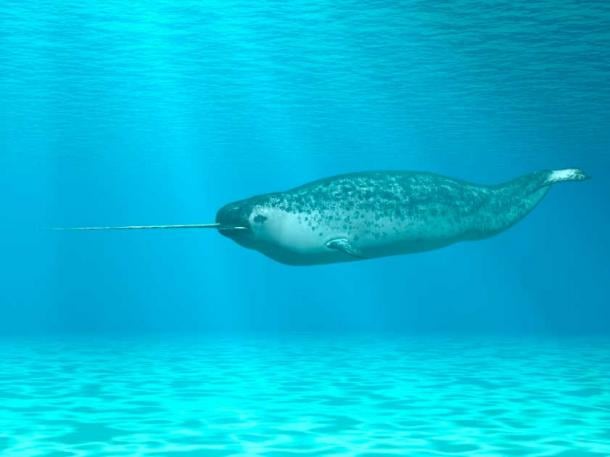
Unicorns are still cryptids, but the ocean dwelling narwhal may have inspired unicorn legends. Its hard, pointed tusk is quite distinctive. ( Andreas Meyer / Adobe Stock)
Before 1910, any scientist claiming to believe in a giant lizard that looked like a dragon would have been laughed out of the room. At the time, it was widely believed that giant lizards were a thing of the past, and nothing on the scale of a Komodo dragon could exist.
When pearl fishermen returned from the Lesser Sunda Islands in Indonesia telling tall tales of giant ‘land crocodiles’, no one took them seriously. After all, fishermen are famous for exaggeration. Then, in 1910, an expedition from Buitenzorg Zoological Museum visited Komodo Island and produced the first scientific report on the creatures. Lieutenant Jacques Karel Henri visited the island and took home both a Komodo dragon skin and a photograph.
The Komodo dragon remained mostly a mystery until 1926, when a second expedition went in search of the dragon. Its leader, W. Douglas Burden, came back with twelve preserved Komodo dragon bodies, as well as two live animals. It was only then the Komodo dragon truly left the realm of the cryptids and entered the world of established science.
The 1926 expedition and discovery of an animal considered by many to be prehistoric went on to inspire the 1933 film King Kong .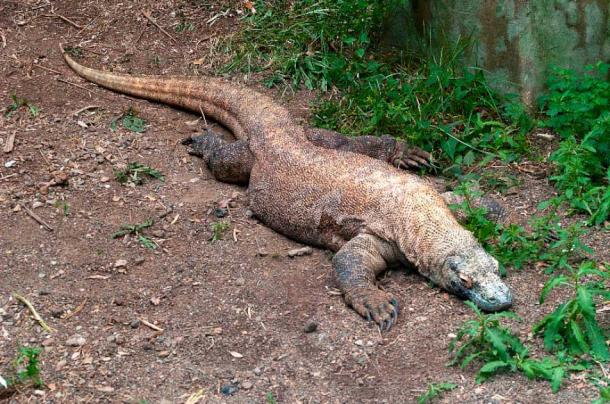
From cryptid to captured: A Komodo dragon at the Louisville Zoo, Kentucky, United States (David Ellis / CC BY NC ND 2.0 )
Sometimes an animal becomes so commonly known that it’s surprising it was ever considered a cryptid at all. For example, the humble gorilla was considered a cryptid until 1847.
The term gorilla comes from a Carthaginian explorer called Hanno the Navigator, who was exploring the African coast in 500 BC. He described coming across a tribe of “gorillae”, monstrous and violent humans. Although it is likely he actually encountered chimps or baboons, the name has stuck.
Reports of monstrous, hairy humans who would attack and overpower villages continue throughout the centuries but were never taken seriously by scientists. In the 16th century, an English explorer described ape-like humans visiting his campfire at night.
Gorillas in general remained cryptids until 1847, when Thomas Savage found gorilla bones in Liberia. With the help of a Harvard anatomist named Jeffries Wyman, he then released a formal description of the species dubbing it, Gorilla gorilla. Sadly, from this point onwards, other anthropologists began hunting gorillas in earnest, seeking to learn as much about the discovery as possible.
The mountain gorilla stayed a cryptid for a while longer. It wasn’t formally recognized as a species until 1902, when a German officer, Captain Robert von Beringe, shot one in the Virunga region of Rwanda and took it home to Europe. 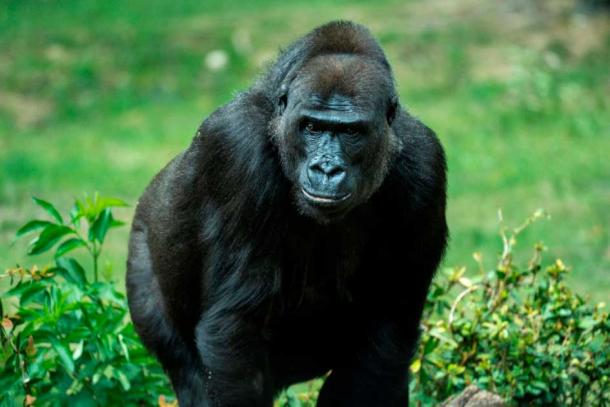
Surprisingly, gorillas were considered cryptids until the mid- to late-1800s. Mira Miejer / CC BY SA 4.0 )
The okapi is an African mammal that resembles a cross between a zebra and a donkey. Their only bizarre feature is the two hair-covered, horn-like structures called ossicones that they have just above their eyes. These may sound bizarre, but actually, the okapi is from the giraffe family, and the ossicones are pretty much the same as a giraffe’s horns. 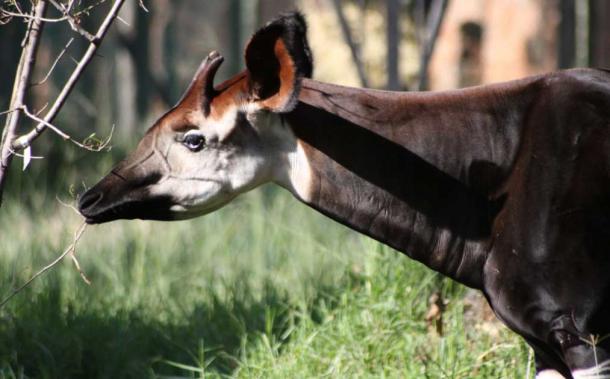
The okapi stayed in cryptid status for a long time, as they are quiet animals that live in dense forests. However, the okapi may have been depicted as early as the 5th century BC. Its unique ossicones led to its nickname as an African unicorn. (DerekKeats / CC BY SA 2.0 )
The okapi isn’t especially peculiar, certainly not compared to the giant squid or platypus. Yet it was considered a myth until 1901. The problem was its central African habitat was already well-known to European explorers, and since they had never seen one, they did not believe the tales the locals told of the okapi.
Okapi inhabit incredibly dense forests and live quiet, solitary lives. Even the locals who told stories of them were unsure. Their knowledge of the okapi predominantly came from evidence the animals left behind, like tracks, rather than actual sightings.
In 1890, Sir Henry Stanley was the first European to describe the mammal after traveling in the region. However, he had no solid proof, and so the okapi remained a cryptid. It was not until 1901 that zoologist and imperial officer Sir Harry Johnston obtained a skull and some skins with the help of locals. With this physical evidence, the okapi’s existence could finally be confirmed.
The okapi wasn’t caught on film in the wild until 2008, which should give an idea of just how hard this beautiful animal is to track down. 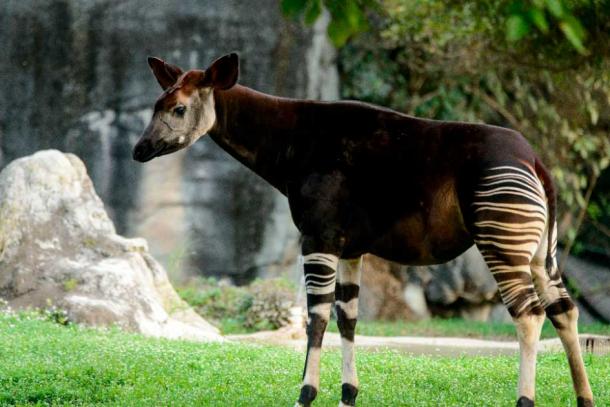
The okapi was thought to be a cryptid until 1901. Its habitat and appearance hindered its documentation. It wasn’t caught on film until 2008! (Eric Kilby / CC BY SA 2.0 )
So, if these cryptids turned out to be real, what about Nessy or Bigfoot? Why are people who believe in them still mocked and derided in the scientific community? The animals above, and in fact, all former cryptids share at least one thing in common.
They come from remote, hard-to-explore regions of the planet. These animals stayed cryptids for so long because European scientists hadn’t had a chance to fully explore their habitats yet. Once they had, these animals stop being cryptids. The problem is, besides the oceans, most of the earth’s land mass has been pretty well studied by now. The likelihood of creatures as large as the okapi walking around undiscovered up to now is slim to none.
Another thing most cryptids have in common is that they were actually discovered ages ago. The okapi and mountain gorilla had been talked about by African tribes for centuries. Likewise, the indigenous peoples of Australia were likely familiar with the platypus.
The awkward truth is that the only reason these animals were never taken seriously is old-fashioned racism. For the most part, something remained cryptid until European scientists said otherwise, seeing it with their own eyes. Centuries of eyewitness accounts made by the locals didn’t count, because colonial-era European scientists lacked respect for the indigenous people of the places they were colonizing.
Although it is unlikely any more large cryptids will be discovered, there is always some hope. There are still far-flung corners of the world and the fathomless depths of the oceans we haven’t scoured yet. If we are now willing to listen to the people from these areas, who knows what we might discover?
Top Image: The Altamaha-ha legend has its roots in Muscogee traditions. This cryptid river monster with an alligator shaped head and long neck, is said to inhabit the Altamaha river and nearby marshes in southern Georgia. Will it be the next cryptid proven real? Source: Daniel Eskridge / Adobe Stock
By Robbie Mitchell
Davis, L. December 12, 2020. Seven Species that Used to Be Cryptids . Indiana University. Available at: https://blogs.iu.edu/sciu/2020/12/12/seven-cryptids-species/
Hamer, A. August 1, 2019 . These 5 Mythical Animals Turned Out to Be Real . Discovery. Available at: https://web.archive.org/web/20220324061424/https://www.discovery.com/nature/Mythical-Animals-Turned-Out-to-Be-Real
Than, K. December 12, 2010. Rumor or Reality: The Creatures of Cryptozoology. Live Science. Available at: https://www.livescience.com/11328-rumor-reality-creatures-cryptozoology.html
Wilkins, A. June 23, 2011. Legendary Cryptids that Turned Out to Be Absolutely Real . Gizmodo. Available at: https://gizmodo.com/legendary-cryptids-that-turned-out-to-be-absolutely-rea-5814976
Also what about the brachiosaur in the congo? You really cant say theres no more unexplored areas when weve hardly mapped the jungles..
And just because the kraken mightve been a giant squid or octopus.. doesnt mean that a giant serpent(or whatever) cannot exist.. considering how much area is in trenches in the ocean.. i just absolutely love how foolish human beings can be
infinitesimal waveparticles comprise what we call home the earth
manipulatable by thought ability supressed in humans since birth
The platypus is just one of the few survivors of the antediluvian genetic experiments in cross species combination.. and as in the days of noah, the Chinese are hybridizing humans n apes..
infinitesimal waveparticles comprise what we call home the earth
manipulatable by thought ability supressed in humans since birth
We have goannas the same size as the kokada dragons. What an absolute beat up!
I’m a graduate of History and Literature from The University of Manchester in England and a total history geek. Since a young age, I’ve been obsessed with history. The weirder the better. I spend my days working as a freelance… Read More










Ancient Origins has been quoted by:
At Ancient Origins, we believe that one of the most important fields of knowledge we can pursue as human beings is our beginnings. And while some people may seem content with the story as it stands, our view is that there exist countless mysteries, scientific anomalies and surprising artifacts that have yet to be discovered and explained.
The goal of Ancient Origins is to highlight recent archaeological discoveries, peer-reviewed academic research and evidence, as well as offering alternative viewpoints and explanations of science, archaeology, mythology, religion and history around the globe.
We’re the only Pop Archaeology site combining scientific research with out-of-the-box perspectives.
By bringing together top experts and authors, this archaeology website explores lost civilizations, examines sacred writings, tours ancient places, investigates ancient discoveries and questions mysterious happenings. Our open community is dedicated to digging into the origins of our species on planet earth, and question wherever the discoveries might take us. We seek to retell the story of our beginnings.
Ancient Origins © 2013 – 2023
Disclaimer – Terms of Publication – Privacy Policy & Cookies – Advertising Policy – Submissions – We Give Back – Contact us